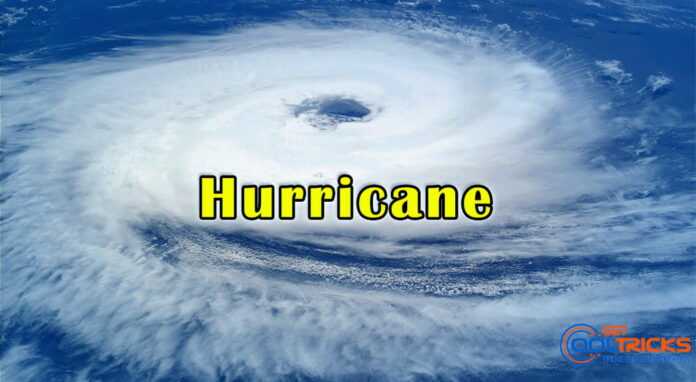El Nino and La Nina are climate patterns in the Pacific Ocean affecting the weather worldwide. These phenomena are extremely important for understanding the global climate.
El Nino
- El Nino was first recognized by Peruvian fishermen off the coast of Peru as the appearance of unusually warm water.
- The Spanish immigrants called it El Nino, meaning “the little boy” in Spanish.
- El Nino soon came to describe irregular and intense climate changes rather than just the warming of coastal surface waters.
- The El Nino event is not a regular cycle, they are not predictable and occur irregularly at two- to seven-year intervals.
- The climatologists determined that El Nino occurs simultaneously with the Southern Oscillation.
- The Southern Oscillation is a change in air pressure over the tropical Pacific Ocean.
- The climatologists determined that El Nino occurs simultaneously with the Southern Oscillation.
- When coastal waters become warmer in the eastern tropical Pacific (El Nino), the atmospheric pressure above the ocean decreases.
- Climatologists define these linked phenomena as El Nino-Southern Oscillation (ENSO).
Monitoring El Nino and La Nina
- Scientists, governments, and non-governmental organizations (NGOs) collect data about El Nino using a number of technologies such as scientific buoys.
- A buoy is a type of object that floats in water and is used in the middle of the seas as locator or as a warning point for ships. They are generally bright (fluorescent) in colour.
- These buoys measure ocean and air temperatures, currents, winds, and humidity.
- The buoys transmit data daily to researchers and forecasters around the world enabling the scientists to more accurately predict El Nino and visualize its development and impact around the globe.
- The Oceanic Nino Index (ONI) is used to measure deviations from normal sea surface temperatures.
- The intensity of El Nino events varies from weak temperature increases (about 4-5° F) with only moderate local effects on weather and climate to very strong increases (14-18° F) associated with worldwide climatic changes.
La Nina
- La Nina means The Little Girl in Spanish. It is also sometimes called El Viejo, anti-El Nino, or simply “a cold event.”
- La Nina events represent periods of below-average sea surface temperatures across the east-central Equatorial Pacific.
- It is indicated by sea-surface temperature decreased by more than 0.9℉ for at least five successive three-month seasons.
- La Nina event is observed when the water temperature in the Eastern Pacific gets comparatively colder than normal, as a consequence of which, there is a strong high pressure over the eastern equatorial Pacific.
The Conditions of La Nina
- La Nina is caused by a build-up of cooler-than-normal waters in the tropical Pacific, the area of the Pacific Ocean between the Tropic of Cancer and the Tropic of Capricorn.
- La Nina is characterized by lower-than-normal air pressure over the western Pacific. These low-pressure zones contribute to increased rainfall.
- La Nina events are also associated with rainier-than-normal conditions over southeastern Africa and northern Brazil.
- However, strong La Nina events are associated with catastrophic floods in northern Australia.
- La Nina is also characterized by higher-than-normal pressure over the central and eastern Pacific.
- This results in decreased cloud production and rainfall in that region.
- Drier-than-normal conditions are observed along the west coast of tropical South America, the Gulf Coast of the United States, and the pampas region of southern South America.
Impact of El Nino-La Nina on different parts of the world
El Nino
- Ocean temperatures, speed, and power of ocean currents are impacted.
- The coastal fisheries and local weather of Australia to South America are affected.
- Rainfall increases drastically in South America, contributing to coastal flooding and erosion. But causes droughts in Indonesia and Australia.
- El Nino-related flooding is associated with increases in cholera, dengue, and MALARIA in some parts of the world, while drought can lead to wildfires that create respiratory problems.
- It decreases the occurrences of hurricanes in the Atlantic.
- Upwelling on the coasts of Ecuador, Peru, and Chile.
- Weaker monsoons and sometimes drought in India and Southeast Asia.
La Nina
- Milder winters in northern Europe and colder winters in southern and western Europe around the Mediterranean region.
- In North America, it causes stronger winds along the equatorial region, hurricanes in the Caribbean and central Atlantic, and more tornados in the US.
- Drought in South America especially in Peru and Ecuador.
- Increased rainfall in the western pacific eventually affected continental Asia and China.
- Heavy floods in Australia.
- Increased temperatures in the western Pacific, Indian Ocean, and Somalia coasts.
- Colder winters in India as it pipes strong cold air from Siberia and forms a north-south low-pressure system.
- Lesser impact of western disturbance.
Previous ENSO events
El Nino
- 1982-83 and 1997-98 were very intense events of the 20th century.
- 1997-98 was the first scientifically monitored full event.
- The “year without a winter” was a time when temperatures in the Midwest broke records for warmth.
La Nina
- The 2010 La Nina event correlates with one of the worst floods in the history of Queensland, Australia.


